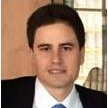Porous Media to Improve the Thermal Performance of Phase Change Materials
A special issue of Thermo (ISSN 2673-7264).
Deadline for manuscript submissions: closed (29 February 2024) | Viewed by 1093
Special Issue Editors
Interests: porous media; thermal energy storage; phase change materials; bioheat; hyperthermia
Special Issues, Collections and Topics in MDPI journals
Interests: thermodynamics; fluid phase equilibrium; structure–properties relationships; various thermodynamic-based models; process simulation models
Special Issues, Collections and Topics in MDPI journals
Special Issue Information
Dear Colleagues,
Phase change materials have been shown to be promising because of their capability in absorbing/releasing heat at a constant temperature. However, it is widely known that their poor thermal characteristics such as conductivity are limiting, as they do not allow these materials to have a large energy density or fast melting/solidification transients. Despite many solutions that have been proposed recently, porous materials such as metal foams, 3D-printed cellular structures, etc., have been shown to be promising. This is because a highly conductive metal is introduced within the phase change materials, increasing not only the overall thermal conductivity, but also the available area for the heat transfer between metal and the phase change materials.
The aim of the present Special Issue is to collect original contributions on thermal enhancement techniques for phase change materials based on porous media, and that propose new solutions to this very recent challenge for energy efficiency and sustainability improvement goals.
Dr. Marcello Iasiello
Prof. Dr. Johan Jacquemin
Guest Editors
Manuscript Submission Information
Manuscripts should be submitted online at www.mdpi.com by registering and logging in to this website. Once you are registered, click here to go to the submission form. Manuscripts can be submitted until the deadline. All submissions that pass pre-check are peer-reviewed. Accepted papers will be published continuously in the journal (as soon as accepted) and will be listed together on the special issue website. Research articles, review articles as well as short communications are invited. For planned papers, a title and short abstract (about 100 words) can be sent to the Editorial Office for announcement on this website.
Submitted manuscripts should not have been published previously, nor be under consideration for publication elsewhere (except conference proceedings papers). All manuscripts are thoroughly refereed through a single-blind peer-review process. A guide for authors and other relevant information for submission of manuscripts is available on the Instructions for Authors page. Thermo is an international peer-reviewed open access quarterly journal published by MDPI.
Please visit the Instructions for Authors page before submitting a manuscript. The Article Processing Charge (APC) for publication in this open access journal is 1000 CHF (Swiss Francs). Submitted papers should be well formatted and use good English. Authors may use MDPI's English editing service prior to publication or during author revisions.
Keywords
- phase change materials
- porous media
- thermal energy storage
- metal foams
- cellular materials
- heat transfer
- thermal performances
- thermal conductivity





